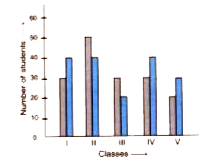Classify the following into levers as class I, class II or class III:
(a) a door
(b) a catapult
(c) claw hammer
(d) a wheel barrow
(e) a fishing rod.
(f) sugar tongs.
Step by step video solution for Classify the following into levers as class I, class II or class III: (a) a door (b) a catapult (c) claw hammer (d) a wheel barrow (e) a fishing rod. (f) sugar tongs. by Physics experts to help you in doubts & scoring excellent marks in Class 10 exams.
Updated on:21/07/2023Topper's Solved these Questions
Similar Questions
State the class of levers and the relative positions of load (L), effort (E) and fulcrum (F) in (a) a bottle opener, and (b0 sugar tongs.
View SolutionState the class of levers and the relative positions of load (L), effort (E) and fulcrum (F) in each of the following cases.
(1) A bottle opener
(2) Sugar tongs.
View Solution
Knowledge Check
Which of the following categories is at the top of the classification hierarchy?
(a) Order
(b) Class
(c) Family
(d) PhylumAOrderBClassCFamilyDPhylum
Which of the following does not belong to class basidimycetes (i) Agaricus (ii)Trichoderma (iii) Puccinia (iv) Saccharomyces (v) Ustilago
View SolutionCount the number of statements which are not related to the members of class chondrichthyes:-
(a) terminal mouth
(b) placoid scales on skin
(c) presence of air bladder
(d) poikilothermal
(e) internal fertilization
(f) vivipary
View SolutionOrganise the following marks in a class assessment, in a tabular form.](i) Which number is the highest? (ii) Which number is the lowest?(iii) What is the range of the data? (iv) Find the arithmetic mean.
View SolutionWhich of the following below to class osteichthyes?
a. sea urchin, b. sea horse, c.flying fish, d. say fish, e. dog fish
View SolutionFrom the following frequency table.

Find : (a) The frequency of fifth class interval
(b) The upper class limit of third class interval.
(c) The lower class limit of second class interval.
(d) The class mark of sixth class interval.
View SolutionExmine the given graph carefully.

In the graph show above represents the number of girls in a particular class and represents the number of boys in the same class.
Read and answer the following questions.
(i) Which class has the least number of students ?
(ii) Which class has maximum number of students ?
(iii) What is the ratio between the number of girls and the number of boys of class V.
View SolutionWrite formulas for the following compounds:
a. Mercury (II) chloride b. Nickel (II) sulphate
c. Tin (IV) oxide d. Thallium (I) sulphate
e. Iron (III) sulphate f. Chromium (III) oxide
View Solution
